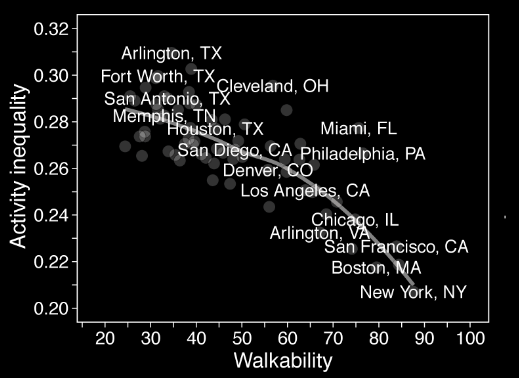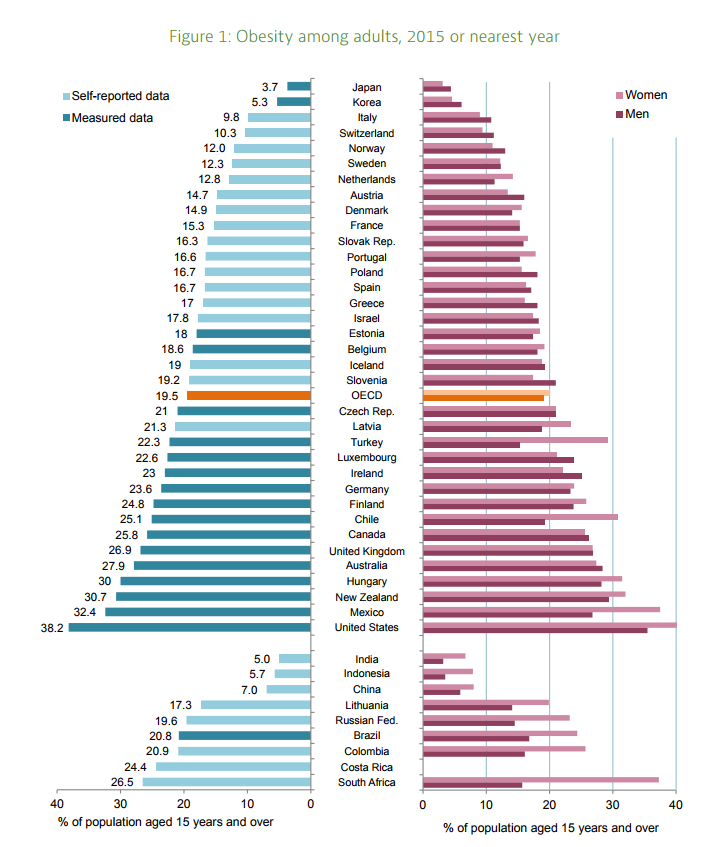Canada — a country vast, rugged and beautiful, admired around the world for its commitment to diplomacy.

But its people’s health? Not exactly.
Canada ranks among the most overweight OECD countries if you judge by body mass index (BMI). And a study out of Stanford University might have figured out why that is.
Coverage of obesity in Canada on Globalnews.ca
The Great White North ranks third from the bottom in rankings of “Activity Inequality” by a group of researchers who looked at smartphone data to see how much walking people do in 111 countries and tracked their steps over an average of 95 days.
The research was published in the scientific journal Nature.
Activity inequality
Activity inequality is a measure that looks at the gap between people who are “activity rich,” or who walk a lot, and the “activity poor,” who don’t.
They found that countries with high levels of activity inequality corresponded with high obesity rates.
“If you think about some people in a country as ‘activity rich’ and others as ‘activity poor,’ the size of the gap between them is a strong indicator of obesity levels in that society,” Scott Delp, a bioengineer who helped lead the research, said in a news release.
This image maps out activity inequality scores for 46 countries where physical activity was distributed more equally. The lighter countries ranked higher on the list, the darker ones ranked lower:
Canada ranked third from the bottom of a list of 46 countries where activity was spread more equally among the population, with an activity inequality score of 30.3.
Only Australia (30.4) and Saudi Arabia (32.5) ranked lower.
Canada’s placement, as well as that of other countries, suggests a correlation with obesity rates.
The 2017 Obesity Update by the OECD placed Canada among its most overweight countries, with 25.8 per cent of the population aged 15 and over considered obese.
Only South Africa, the U.K., Australia, Hungary, New Zealand, Mexico and the U.S. had higher rates.
The Stanford researchers found that people from the five countries with the highest levels of activity inequality were “196 per cent more likely” to be obese than individuals with the lowest levels.
READ MORE: Here’s why Canada gets a failing grade in treating the obesity epidemic
One of the reasons for high activity inequality could be the built-up environment in certain cities, which affects aspects like walkability.
The study looked at data for 69 U.S. cities and found that “higher walkability scores are associated with lower activity inequality.”

The researchers derived their data from smartphones using the Azumio Argus app, which tracks physical activity, said a news release.
The app provided data such as gender, age, weight and height; the latter two metrics allowed the researchers to determine body mass index (BMI), a widely used tool for measuring obesity.
BMI, however, has come under heavy criticism as a health measure.
Its ineffectiveness has been noted by outlets including NPR and Vox; the latter reported last year that it can “incorrectly flag the athletic or particularly muscular as overweight.”
BMI also doesn’t account for people who may have normal levels but have fat concentrated in a particular place.
People with normal BMI levels may believe they’re perfectly healthy, when in fact they may be living with heart disease, the website reported.






Comments